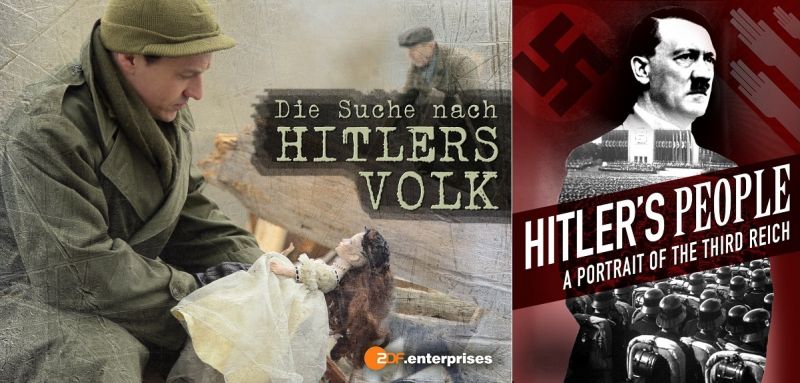Hitler’s People: A Portrait of the Third Reich part 1: On 30 January 1933 Adolf Hitler was appointed German Reichskanzler. Theoretically, he was only one further new head of government. But in the practice of the coming months, the head of the NSDAP managed to completely reconstruct the country and center it around his person. Terror became a principle of politics, and Germany a fascist dictatorship. The “Fuhrer State” favored a new elite: adaptable government officials, jurists, artists and businessmen launched meteoric careers.
How could Hitler count on the German public even in the face of unspeakable suffering and impending doom? Evocative and previously unseen private archive footage, much of it in colour, shows life in Nazi Germany from 1933 onwards till the end of the Nazi regime in 1945 as never before. This two-part documentary is an intimate and revealing portrait of the German people under Hitler. With the advance of the Allies on German soil at the end of 1944, not only the military defeat of the “Third Reich” became apparent, but also the end of the Hitler regime. However, the slogan “Fuhrer commands, we follow!” still had an effect. Above all, younger “comrades” continued to be deceived by deceptive slogans of victory.
Others wanted to fight to the end because they feared the consequences of surrender. The Allied commanders are wondering what their own soldiers and occupying forces can expect on German territory. Americans and Britons literally sent Germany experts and psychologists to the front to fathom the riddle of the German mentality. One of the scouts was Saul K. Padover, an American social scientist and historian originally from Vienna.
He should conduct in-depth interviews with “completely normal” Germans. He spoke to captured soldiers at the front, but also to housewives, workers, civil servants and clergy – sometimes just hours after the invasion.What image did people have of Hitler at that time? How did the people perceive the dictator? What made people unconditionally join the “national community”, possibly to the point of extinction? Padover had other questions on his mind: How could Hitler have led “his” people into a war? Why was there hardly a audible contradiction even after heavy defeats? Why did the machinery of the war of annihilation and the death factories work so smoothly? What did the Germans know about the unprecedented crimes? Excerpts from conversations that Padover recorded are scenically reconstructed in the two-part documentary, with Markus Brandl as the main actor.
Hitler’s People: A Portrait of the Third Reich part 1
Many decades after the end of the Nazi dictatorship, the period 1933-1945 still poses many mysteries: What determines the interrelationship between “Fuhrer” and people? Why did so many people settle into the dictatorship as a matter of course? Why, even after the worst military defeats and knowledge of unprecedented crimes against humanity, was there little resistance? Recent studies by renowned international historians and psychologists provide answers to these questions. The dictatorship is shown from the inside perspective. Fates documented in files, diaries, letters and photos convey a comprehensible idea of everyday life in a state structure that gave many contemporaries the appearance of normality, but in reality overrode all norms and values of modern times.
A wealth of newly developed private film recordings also provides an unusual visual insight into the reality of those distant times. Re-enactments of interviews with Germans by Allied officers in 1944 and 1945 complete the picture. Documentary flashbacks to the Nazi era, illustrated with previously unpublished private films, provide information, and current findings by renowned historians and social psychologists often provide amazing insights. Eyewitness statements complete the picture, such as the memories of Georg Stefan Troller, who himself was an interrogation officer in a US uniform in his old homeland. 70 years later, the authors accompany the Allied spies on their voyage of discovery through the National Socialist cosmos in a seemingly exotic country. Both films seek answers to the still moving question: Why?




